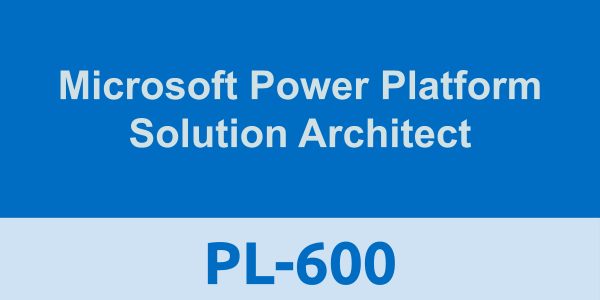As a candidate for this exam, you’re a solution architect who:
◉ Leads successful implementations.
◉ Focuses on how solutions address the broader business and technical needs of organizations.
This role requires you to have the ability to identify opportunities to solve business problems.
You should have functional and technical knowledge of:
◉ Microsoft Power Platform
◉ Dynamics 365 customer engagement apps
◉ Related Microsoft cloud solutions
◉ Other third-party technologies
You apply knowledge and experience throughout an engagement. You perform proactive and preventative work to:
◉ Increase the value of the customer’s investment.
◉ Promote organizational health.
As a candidate for this exam, you should have experience across functional and technical disciplines of Microsoft Power Platform. You should be able to facilitate design decisions across development, configuration, integration, infrastructure, security, licensing, availability, storage, and change management. In this role, you balance project's business needs while meeting functional and non-functional requirements.
Microsoft Power Platform Solution Architect Exam Summary:
| Exam Name | Microsoft Certified - Power Platform Solution Architect Expert |
| Exam Code | PL-600 |
| Exam Price | $165 (USD) |
| Exam Price | 120 mins |
| Number of Questions | 40-60 |
| Passing Score | 700 / 1000 |
| Books / Training | PL-600T00: Power Platform Solution Architect |
| Sample Questions | Microsoft Power Platform Solution Architect Sample Questions |
| Practice Exam | Microsoft PL-600 Certification Practice Exam |
Microsoft PL-600 Exam Syllabus Topics:
| Topic | Details |
| Perform solution envisioning and requirement analysis (35-40%) | |
| Initiate solution planning | - Evaluate business requirements - Identify Microsoft Power Platform solution components - Identify other components including existing apps, Microsoft Dynamics 365 apps, AppSource apps, third-party components, and components from independent software vendors (ISVs) - Identify and estimate migration and integration efforts |
| Identify organization information and metrics | - Identify desired high-level organizational business processes - Identify business process improvement opportunities - Assess an organization's risk factors - Review key success criteria |
| Identify existing solutions and systems | - Evaluate an organization’s enterprise architecture - Identify data sources needed for a solution - Define use cases and quality standards for existing data - Identify and document an organization's existing business processes |
| Capture requirements | - Refine high-level requirements - Identify functional requirements - Identify non-functional requirements - Confirm that requirements meet an organization's goals - Identify and document an organization's desired business processes |
| Perform fit/gap analyses | - Determine the feasibility of meeting specific requirements - Evaluate Dynamics 365 apps and AppSource options to solve requirements - Address functional gaps through alternate solutions - Determine the scope for a solution |
| Architect a solution (40-45%) | |
| Lead the design process | - Design the solution topology - Design customizations for existing apps - Design and validate user experience prototypes - Identify opportunities for component reuse - Communicate system design visually - Design application lifecycle management (ALM) processes - Design a data migration strategy - Design apps by grouping required features based on role or task - Design a data visualization strategy - Design an automation strategy that uses Power Automate - Design environment strategy |
| Design the data model | - Design tables and columns - Design reference and configuration data - Design relationships and relationship behaviors - Determine when to connect to external data versus import data - Design data models to address complex sets of requirements |
| Design integrations | - Design collaboration integrations - Design integrations between Microsoft Power Platform solutions and Dynamics 365 apps - Design integrations with an organization’s existing systems - Design third-party integrations - Design an authentication strategy - Design a business continuity strategy - Identify opportunities to integrate and extend Microsoft Power Platform solutions by using Microsoft Azure - Design Robotic Process Automation (RPA) - Design networking |
| Design the security model | - Design the business unit and team structure - Design security roles - Design column and row level security - Design security models to address complex sets of requirements - Determine security model management policies and processes - Identify Microsoft Entra ID groups and app registrations required to support a solution - Identify data loss prevention (DLP) policies for a solution - Determine how external users will access a solution |
| Implement the solution (15-20%) | |
| Validate the solution design | - Evaluate detail designs and implementation - Validate security - Ensure that the solution conforms to API limits - Assess the solution performance and impact on resources - Resolve automation conflicts - Resolve integration conflicts |
| Support go-live | - Identify and resolve potential and actual performance issues - Troubleshoot data migration - Resolve any identified issues with deployment plans - Identify factors that impact go-live readiness and remediate issues |





0 comments:
Post a Comment